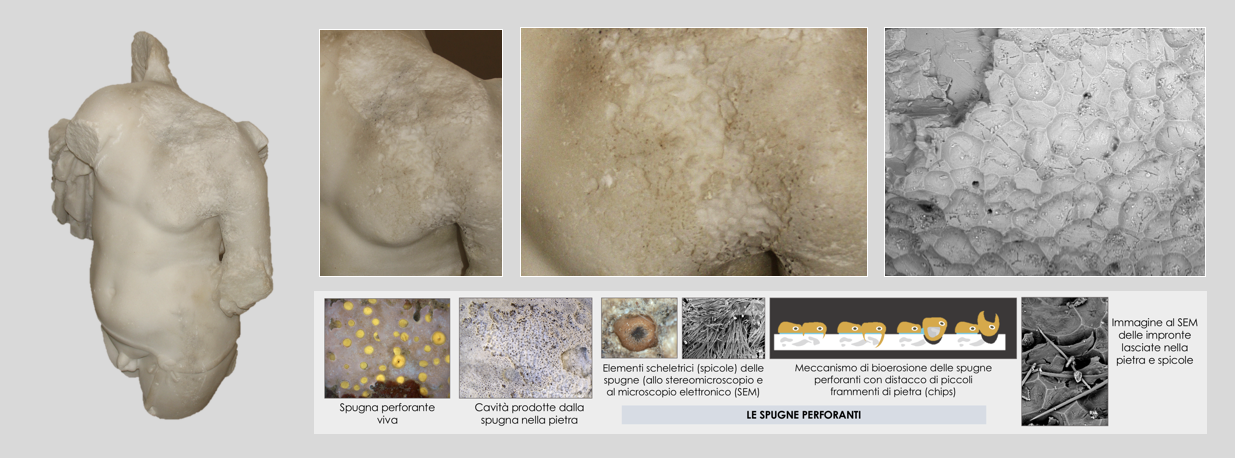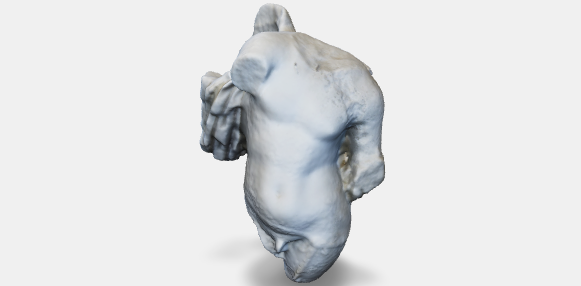Found during the beginning of the 1920s in the waters of the port of Baia, among the remains of the sumberged imperial palace, this torsetto of Cupid in white marble – with the head, the right arm, the left forearm, the right leg and part of the left one, the left wing missing – originally rested on some kind of support.
The lithe pose and the graceful attitude refer to the model of a Cupid Punished, like a child after a mischief.
The statue, in a good state of conservation, shows a limited biological degradation on the left shoulder due to the endolithic development of boring sponges. Sub-globular cavities produced by Cliona sponges are visible. These microorganisms caused a deterioration of the outermost layer of marble. The image below illustrates this kind of degradation in detail; the SEM observations highlighted the morphology of the eroded cavities made by sponges and brought to light minute perforations caused by endolithic microorganisms (microboring).

Davidde B., Ricci S., Poggi D., Bartolini M., 2010. Marine bioerosion of stone artefacts preserved in the Museo Archeologico dei Campi Flegrei in the Castle of Baia (Naples), Archaeologia Maritima Mediterranea; 7: 75-115.
Maniscalco, F. 1995, ‘Un ninfeo severiano nelle acque del porto di Baia’, Ostraka, 4(2), p. 268.
Maniscalco, F. 1997, Ninfei ed edifici marittimi severiani del Palatium imperiale di Baia. Napoli: Massa Editore, pp. 52-55.
Napoli, M. 1953 ‘Di una villa marittima di Baia’, Bollettino di Storia dell’Arte. Istituto Universitario di Magistero, Salerno, III(1), pp. 96-97.
Ricci S., Sacco Perasso C., Antonelli, F., Davidde Petriaggi B., 2015. Marine Bivalves colonizing roman artefacts recovered in the Gulf of Pozzuoli and in the Blue Grotto in Capri (Naples, Italy): boring and nestling species. International Biodeterioration & Biodegradation (98) 89 – 100.
Ricci, S., Pietrini, A. M., Bartolini, M., Sacco Perasso, C., 2013. Role of the microboring marine organisms in the deterioration of archaeological submerged lapideous artifacts (Baia, Naples, Italy). International Biodeterioration & Biodegradation 82 (2013) 199-206.
Ricci S., Davidde B., Bartolini M., Priori G. F., 2009. Bioerosion of lapideous objects found in the underwater archaeological site of Baia (Naples). Archaeologia Maritima Mediterranea, 6: 167-188.
Zevi F. (cur.) 2009, Museo archeologico dei Campi Flegrei. Castello di Baia. Napoli: Electa Napoli, vol. 3, p. 138.



